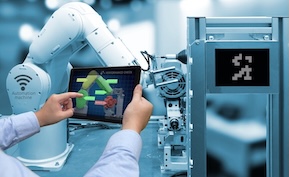Accounting
Benchmarking Accuracy: Manual vs. Automated Bookkeeping

One of the most common debates in finance teams is whether to continue with manual bookkeeping or invest in automated solutions. Beyond convenience, the choice has real implications for accuracy, efficiency, and cost. By looking at actual benchmarks around error rates, time savings, and financial impact, businesses can make a data-driven decision about when to transition from spreadsheets to software.
Error Rates: Human vs. Machine
Studies consistently show that manual data entry introduces significant error risk. According to research from the Association of Certified Fraud Examiners (ACFE) and accounting software vendors:
- Manual bookkeeping error rates: ~1–3% of transactions contain mistakes, often due to typos, formula errors, or misclassifications.
- Automated bookkeeping error rates: <0.5% when systems pull data directly from APIs (e.g., bank feeds, payment processors).
While no system is error-free, automation drastically reduces opportunities for human error, especially in high-volume transaction environments.
Time Savings from Automation
Manual bookkeeping involves repetitive processes such as entering invoices, categorizing expenses, and reconciling accounts. Automation platforms accelerate these steps:
- Invoice processing: Manual entry averages 5–10 minutes per invoice. Automation reduces this to under 1 minute through OCR and templates.
- Bank reconciliation: A mid-sized business may spend 20+ hours per month reconciling accounts manually. Automation can cut this to 2–3 hours.
- Month-end close: Manual close cycles can stretch 10–15 days. Automated workflows often reduce this to 5–7 days.
On average, businesses report 40–60% time savings after switching to automated bookkeeping tools.
Cost Impact and ROI
Manual bookkeeping is labor-intensive. Even when outsourced, costs scale with transaction volume. By contrast, automation platforms typically charge a flat subscription fee.
- Manual costs: A full-time bookkeeper may cost $40,000–$60,000 annually, plus overhead.
- Automation costs: Tools like QuickBooks, Xero, or Zoho Books range from $30–$100/month, with additional fees for integrations.
- Hybrid model: Many small businesses keep part-time bookkeeping support for oversight while letting automation handle 70–80% of tasks.
ROI often appears within the first year. For example, a business processing 500 invoices monthly could save 40–60 hours of staff time, equating to $1,500–$2,500 in monthly labor costs offset by a <$100 software subscription.
Benchmark Snapshot
| Metric | Manual Bookkeeping | Automated Bookkeeping |
|---|---|---|
| Error Rate | 1–3% per transaction | <0.5% per transaction |
| Time Spent on Reconciliation | 20+ hrs/month | 2–3 hrs/month |
| Month-End Close | 10–15 days | 5–7 days |
| Annual Cost | $40k–$60k per FTE | $360–$1,200 software subscription |
When Manual Still Works
Despite its inefficiencies, manual bookkeeping may still make sense for:
- Early-stage businesses with <100 transactions per month.
- Owners who prefer complete hands-on control.
- Situations requiring highly customized categorization not yet supported by automation tools.
The Bottom Line
Benchmarking shows that automation consistently beats manual bookkeeping in accuracy, speed, and cost efficiency. While very small businesses may survive on spreadsheets, growing organizations gain clear ROI from software-driven workflows. As automation tools become more affordable and AI-driven, the gap will only widen—making manual bookkeeping increasingly difficult to justify at scale.






